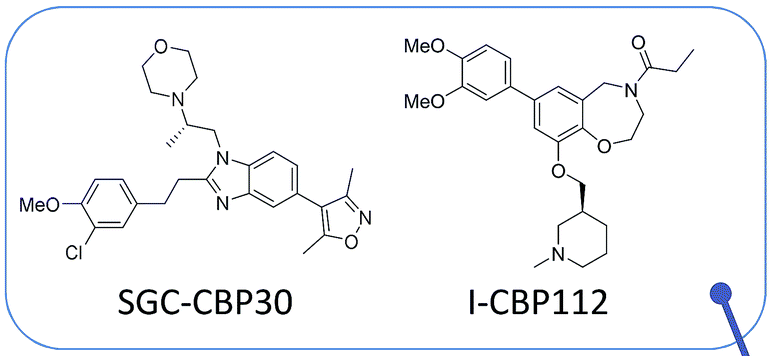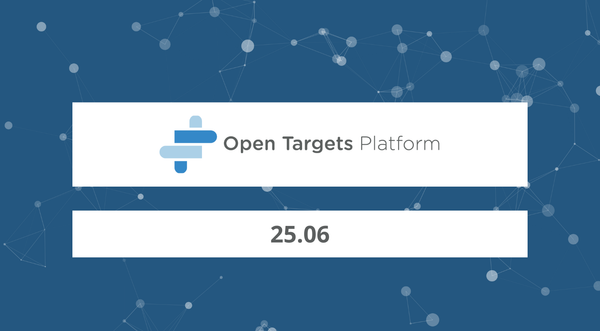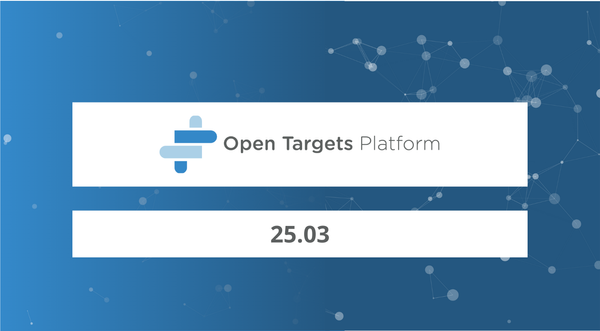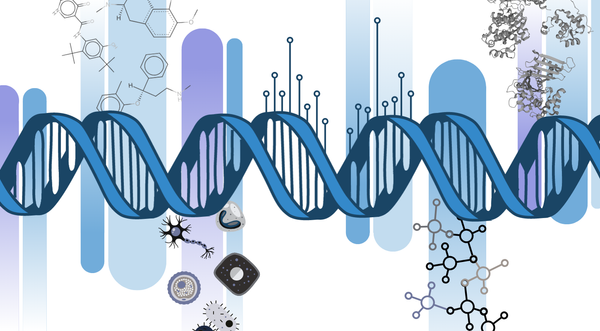Probing your next target? Use our Chemical Probes feature for target validation in Open Targets
Please note that since the release of the next-generation Open Targets Platform, some of these features may have been updated. Please read the new Platform documentation for details of how we integrate information about chemical probes and target enabling packages.
Chemical probes are powerful research reagents for preclinical target validation in drug development projects.
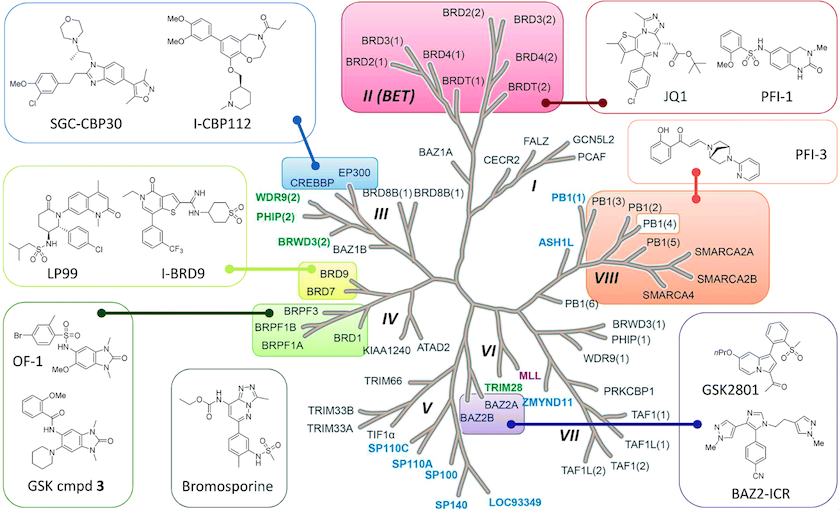
Bromodomain family tree and SGC Chemical Probes (Cox et al., 2016)
They are potent, selective and cell-permeable modulators of protein function that can easily be applied to different assay systems including primary cell culture, tissues and in vivo models. Chemical probes can be used as complementary tools alongside biological reagents for target validation. Biological methods like RNAi and CRISPR often result in depletion of the target protein from the cell, whereas chemical probes usually modulate protein function but do not affect protein levels. Small molecules therefore allow for detailed interrogation of target function in a concentration and time-dependent manner. The Open Targets target profile pages provide links to chemical probes from several initiatives that provide collections of manually curated, high-quality tool compounds.
Hand-picked probes
The Structural Genomics Consortium (SGC) catalyses research in new areas of human biology and drug discovery and all its research output is made available to the scientific community. Chemical probes and associated data generated by this open collaborative network of scientists are open access reagents with no restrictions on use. These probes, mostly for epigenetics and kinase targets, show in vitro potency of <100 nM, are >30-fold selective versus other protein subfamilies and have significant on-target effects in cells at <1 μM. The Open Targets Platform now provides links to 60 SGC Chemical Probes on the corresponding target profile pages.
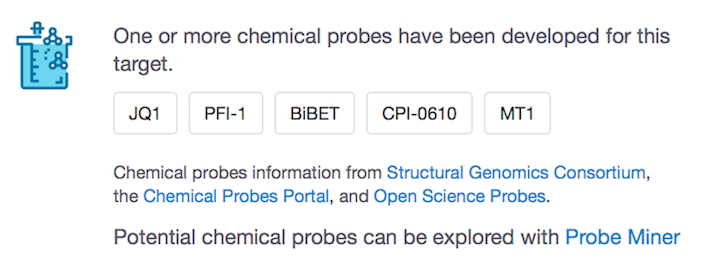
Chemical Probes section on the Open Targets profile page for BRD2
The Chemical Probes Portal is a community-driven resource (Arrowsmith et al., 2015) for high-quality chemical probes. The portal provides guidance on the best chemical probes available for a specific target and flags their limitations. Members of the Scientific Advisory Board, a diverse group of scientists from the fields of chemical biology, medicinal chemistry and pharmacology, review chemical probes and associated data and rate them for use in cellular and in vivo model systems. A star rating system makes it easy for non-experts to select high-quality chemical probes for their experiments. The Chemical Probes Portal endorses compounds for use as potent and selective modulators of the proposed target if they receive reviews with 3 stars (‘Best available probe for this target, or a high quality probe that is a useful orthogonal tool’) or 4 stars (‘Recommended as a probe for this target’). As of September 2018, 125 chemical probes have received 3- and 4-star reviews by the Chemical Probes Portal and the Open Targets Platform provides links to their chemical probe summary pages.
Open Science Probes is a precompetitive collaboration of currently seven pharmaceutical companies that agreed to make a number of high-quality probes available together with associated data, control compounds and recommendations on use via the SGC (Müller et al., 2018). Chemical probes in this collection fulfill the same criteria as SGC probes (in vitro potency < 100 nM, >30-fold selective versus other protein subfamilies, significant on-target effects in cells at < 1 μM). In addition, their chemical structure is assessed to exclude pan-assay interference compounds (PAINs) and 100-times less potent control compounds are available for each probe. Links to the initial set of 30 chemical probes in the Open Science Probes collection are provided on the corresponding target profile pages in the Open Targets Platform.
The SGC, the Chemical Probes Portal and Open Science Probes provide detailed characterisations of chemical probes to enable researchers to make informed choices. Where available, suggestions for inactive analogs of the probes for use as negative controls are provided. Importantly, the chemical probes from all three initiatives are freely accessible and information on probe availability is provided where possible.

Mining for probes
A very different approach has been taken by The Institute of Cancer Research with the development of Probe Miner. This Chemical Probes public resource integrates public bioactivity data for small molecules to systematically and objectively identify potential chemical probes. Probe Miner integrates six different scores to automatically rank and assess 1.8 million compounds for their potency, selectivity and permeability as well as structure-activity relationships, inactive analogs and PAIN potential (Antolin et al., 2018). Probe Miner flags compounds not fulfilling minimum requirements of potency (< 100 nM), selectivity (> 10-fold selective against any other protein) and permeability (effects in cells at < 10 μM). It recommends to use these compounds with caution and to carefully evaluate all the information before selecting any chemical probe. As of August 2018, Probe Miner identified potential chemical probes for over 2,300 human targets. Starting with the 18.08 data release, the Open Targets target profile pages provide links to the appropriate Probe Miner target overview pages in the chemical probes section.
There is more to come
The Open Targets Platform now brings together information on chemical probes from different resources to leverage all available data. We hope that the inclusion of chemical probes into the Open Targets Platform enables our users to validate targets more efficiently. Chemical probes will also feature in the October Open Targets release, this time as part of target tractability to aid target prioritisation.

